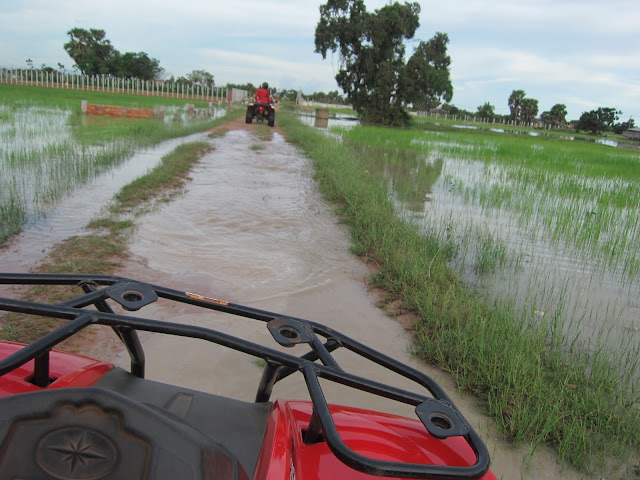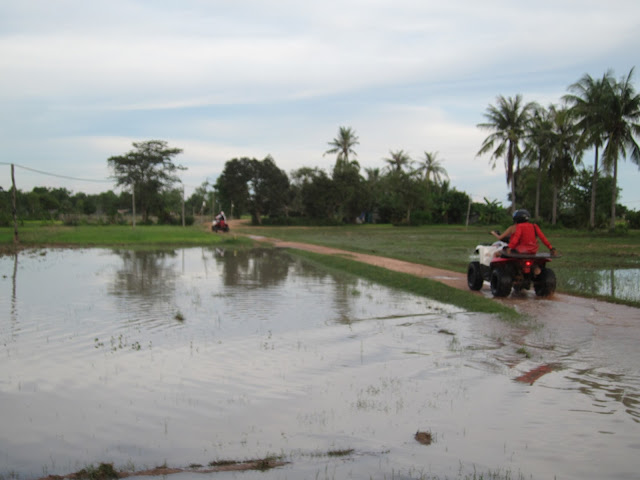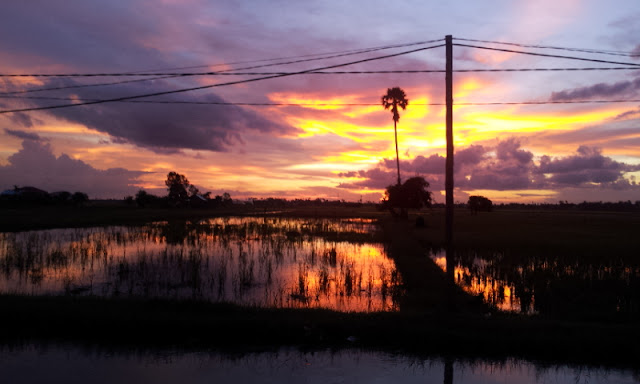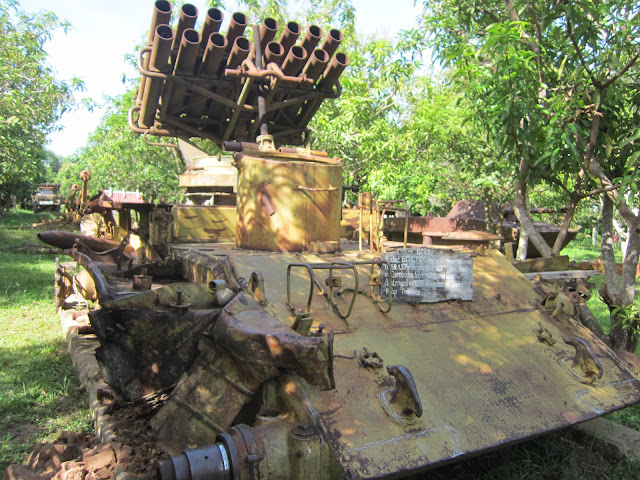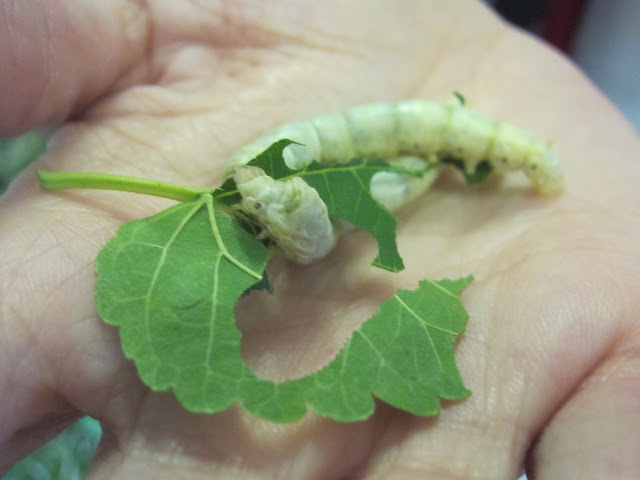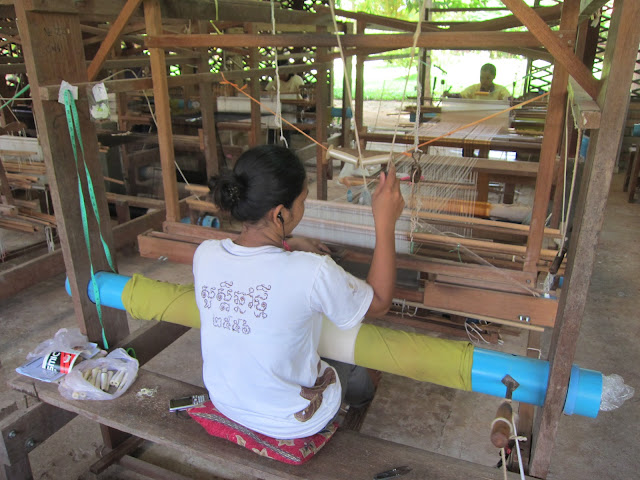Day 4 - Quad Adventure
One thing you must not missed when in Siem Reap is to go for a ride on the Quads. I would highly recommend that you go for a relaxing sunset tour where they will bring you for a 1.5 to 2 hour tour to the paddy fields, see the villagers and watch the beautiful sun set.
You can book in advance via the site here: Quad Adventure.
View Larger Map
There are many different kinds of tours available tailored according to your budget and the time you have. The staff are very friendly and if you stay in a hotel around the town centre, they will come and pick you up in a tuk-tuk. Also, I like their safety culture and they take it seriously.
A Quad adventure staff came on a tuk tuk and picked us up from our hotel. And it was just a 10 minute ride to the Quad Adventure base.
And along the way riding on the tuk tuk, we passed by old shops and villages through unpaved, dusty roads and the sense of adventure filled the air.
Here is the Quad station where you pick up the quads. Before the actual tour, the staff there who is very courteous and friendly will teach you how to handle the quad, they will let you try and you go for a short practise run first in the vicinity. Then you are ready to go out into the village tours.
And these are some of the scenes we experienced and enjoyed riding the quads.
And finally, we stopped by the road side for a good half hour to enjoy the scene. There are many cows and buffaloes being herded back to the farms after their day out grazing. Then the beautiful sun set - from a pinky setting into one golden orangey sky.
Cheers! So when you are in Siem Reap, don't forget to mark this as one of the 'must do' activities. You'll enjoy it throughly just as we did. Happy Holidays ...












